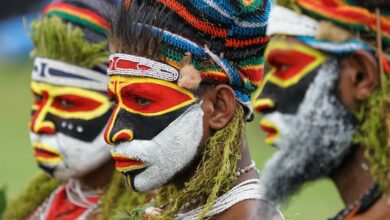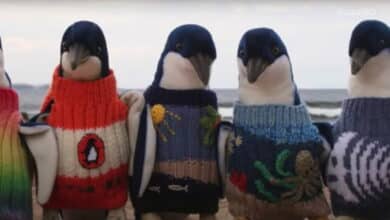In a dusty arena tucked away in the vibrant heartlands of Colombia, where music pulses through the air and crowds press together under blistering sun, a figure steps out onto the dirt-packed ring. Clad in colourful sequins and armed with nothing more than a cape and courage, he faces a bull many times his size. He is not just a matador. He is a mata-dwarf, a performer in one of the most bizarre, controversial, and dangerous forms of bullfighting in the world.
Welcome to a world where bravado is everything, and size, as it turns out, is nothing but a number.
A Tradition with a Twist: Bullfighting in Colombia
To understand the rise of the mata-dwarfs, we first need to understand bullfighting itself, a centuries-old tradition that came to Latin America with the Spanish conquistadors. While Spain remains the global centre of bullfighting, countries like Mexico, Peru, Ecuador, and Colombia have developed their own interpretations of the sport.
In Colombia, bullfighting took hold in the 16th century and evolved into a cultural phenomenon, especially during festivals like the famed Feria de Cali and Corralejas, open-air, chaotic bull events held mostly in the Caribbean coastal regions. The arenas aren’t always polished stadiums; often, they’re temporary wooden structures hastily assembled in town centres, held together by nails, ropes, and tradition.
Here, bullfighting is not just a sport; it’s a spectacle, a clash of man versus beast, wrapped in music, costumes, machismo, and alcohol. But tucked within this spectacle is a peculiar, and often misunderstood, variant: dwarf bullfighting.

Enter the Mata-Dwarfs
Known in Spanish as enanos toreros (dwarf bullfighters), these performers are often dismissed as comic relief or sideshow acts. But make no mistake, what they do requires real courage, serious athleticism, and an unshakable connection to both culture and community.
The word mata-dwarf is a blend of matar (to kill or fight) and dwarf, a term that refers to the performers’ physical stature — individuals with dwarfism, who typically stand under 4 feet 10 inches tall. But while the name implies confrontation, the goal of mata-dwarfs isn’t to kill the bull. Their performances are more theatrical and comedic, intended to entertain and charm the audience, though the danger is very real.
Facing bulls often twice their size, mata-dwarfs perform daring dodges, sprints, feints, and even flips. Sometimes, they team up with full-sized clowns or toreros in choreographed acts that blend physical comedy with acrobatics. And always, they do it with one thing in mind: not getting trampled.
Geography and the Roots of the Tradition
This tradition is most prominent in the northern coastal departments of Colombia, places like Sucre, Bolívar, and Córdoba, where bull festivals draw crowds by the thousands. These are regions where Afro-Caribbean culture mingles with Spanish colonial remnants, where music, heat, and celebration are part of everyday life.
In the town of Sincelejo, for example, the Corralejas festival is one of the largest in the country, drawing not just local Colombians but tourists eager for an unfiltered slice of culture. During these events, everyone from amateur bullfighters to seasoned performers jumps into the ring. It’s loud, chaotic, and anarchic, and this is where the mata-dwarfs shine.
Unlike traditional bullrings with strict rules, Corralejas arenas are informal and open to interaction. They allow for a level of improvisation and community participation that simply doesn’t exist in the formal plazas of Bogotá or Medellín. In these rings, dwarf bullfighters aren’t just tolerated, they’re celebrated, cheered, and even revered.
Faces Behind the Capes: Real Lives, Real Risks
One of the most famous mata-dwarfs in Colombia is El Torerito, a performer from the Caribbean coast who has spent over a decade in the ring. Behind his stage name is a man with dreams, fears, and a family who worries every time he performs. He started in the circus but found his passion in bull arenas, where his talent for acrobatics and comic timing quickly made him a crowd favourite.
For Torerito and others like him, bullfighting isn’t just a job; it’s a calling. It gives them a platform, a livelihood, and a place in society where they’re more than just people with a disability. In the ring, they are equals, or even superstars.
But that stardom comes at a price.
Injuries are common. There are no harnesses, no safety nets. If a bull charges unexpectedly or a leap is mistimed, the result can be devastating. There are stories of mata-dwarfs being gored, trampled, or even killed. Yet many return, time and again, driven by a mix of adrenaline, pride, and love for the craft.
The Ethics of Entertainment: Between Culture and Criticism
Of course, dwarf bullfighting is not without controversy.
Human rights organisations and disability advocates have long criticised the practice as exploitative and degrading. They argue that it reduces people with dwarfism to comic caricatures, using physical differences for cheap laughs. Animal rights activists, meanwhile, denounce any form of bullfighting, comedic or otherwise, as cruel and outdated.
And yet, in Colombia and other parts of Latin America, defenders of the tradition argue that this is not mockery but inclusion. In a society where people with dwarfism often face marginalisation, the bullring offers a rare stage for talent and visibility.
“I’m not a clown,” one mata-dwarf famously said in an interview. “I’m a bullfighter. I train hard. I put myself at risk. And when the crowd cheers, they’re not laughing at me, they’re cheering for me.”
The line between exploitation and empowerment is thin, and it often depends on who is telling the story.
Global Curiosities: How the Tradition Spreads
Interestingly, the Colombian version of dwarf bullfighting is part of a larger global subculture that exists in Mexico, Spain, and parts of the Philippines. Each country has its own spin on the tradition, but the themes are similar — comic relief within a larger bullfighting event, blending danger with theatre.
In Mexico, the enanitos toreros often tour as part of traveling bullfight troupes, mixing professional wrestling with traditional performance. In Spain, the practice has mostly faded in light of disability rights progress, but remnants still appear in rural festivals.
Colombia, however, remains one of the few countries where the mata-dwarf tradition is still actively embraced not just as nostalgia, but as a living, evolving form of entertainment.
Why They Do It: Pride, Identity, and Power
So, what compels a person standing barely over a meter tall to run headfirst into a ring with a 600-pound bull?
The answers are deeply personal.
For some, it’s economic. Jobs for people with dwarfism in rural Colombia are scarce. The ring offers money, fame, and mobility.
For others, it’s about identity. They’re not content to be hidden away, pitied, or ignored. They want to be seen not as victims, but as warriors.
And for a few, it’s about legacy. Many come from families with a history in the circus or the arena. To step into the ring is to step into a lineage to claim a spot in a story bigger than themselves.

The Future of the Mata-Dwarfs
As Colombia continues to evolve, so does the conversation around traditions like dwarf bullfighting. Younger generations are increasingly torn proud of their cultural heritage but sensitive to its ethical implications.
There are calls to regulate or even ban the practice. Others advocate reform, changing the structure of performances to focus more on skill and comedy, and less on proximity to harm. Some mata-dwarfs themselves have transitioned into trainers, comedians, or circus performers, expanding their repertoire while still honouring their roots.
But whatever the future holds, one thing is certain: the story of the Colombian mata-dwarfs is far more than a novelty. It’s a story of resilience, culture, geography, and human spirit.
Conclusion: The Ring as a Mirror
In the end, the small bullrings of Colombia reflect something much larger than entertainment. They reflect a society’s ongoing negotiation with its traditions, its values, and its sense of identity. They ask hard questions: Who gets to be a hero? Who decides what’s empowering? What does dignity look like when wrapped in sequins and facing down a bull?
For the mata-dwarfs, the answer is found in the roar of the crowd, the thud of hooves, and the silence that falls when they take that first daring step into the ring.
It is, indeed, an incredibly small world but one filled with bravery, complexity, and heart far larger than the arena itself.




